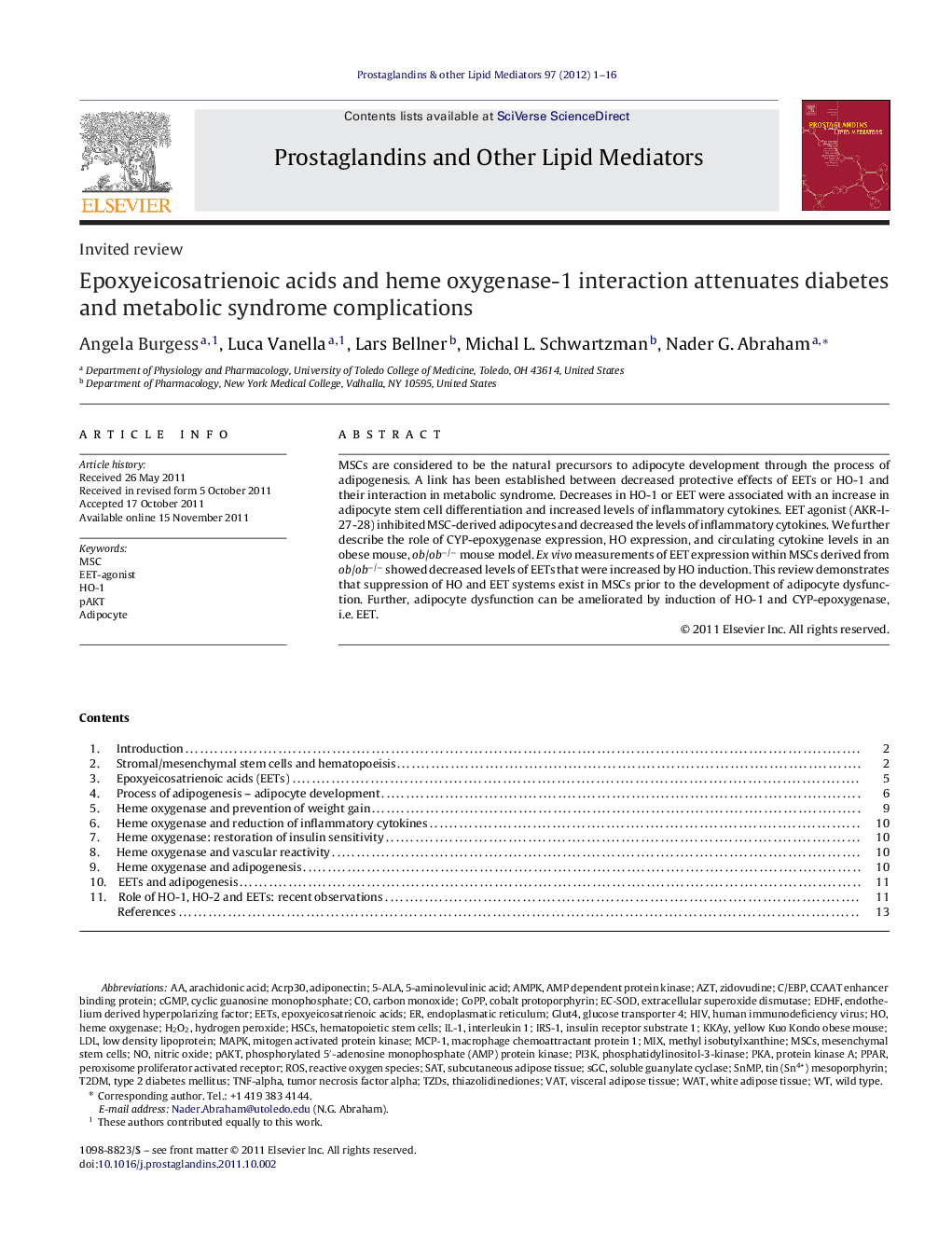| Article ID | Journal | Published Year | Pages | File Type |
|---|---|---|---|---|
| 2019638 | Prostaglandins & Other Lipid Mediators | 2012 | 16 Pages |
MSCs are considered to be the natural precursors to adipocyte development through the process of adipogenesis. A link has been established between decreased protective effects of EETs or HO-1 and their interaction in metabolic syndrome. Decreases in HO-1 or EET were associated with an increase in adipocyte stem cell differentiation and increased levels of inflammatory cytokines. EET agonist (AKR-I-27-28) inhibited MSC-derived adipocytes and decreased the levels of inflammatory cytokines. We further describe the role of CYP-epoxygenase expression, HO expression, and circulating cytokine levels in an obese mouse, ob/ob−/− mouse model. Ex vivo measurements of EET expression within MSCs derived from ob/ob−/− showed decreased levels of EETs that were increased by HO induction. This review demonstrates that suppression of HO and EET systems exist in MSCs prior to the development of adipocyte dysfunction. Further, adipocyte dysfunction can be ameliorated by induction of HO-1 and CYP-epoxygenase, i.e. EET.
► HO-1 expression diminished during adipogenic differentiation of MSCs. ► EET agonist increase HO-1 expression. ► EET agonist may suppress the recruitment of adipocyte signaling pathways in adipose tissue. ► HO-1 or EET essential for suppression of PPAR-gamma and aP2. ► EET and HO-1 increases adiponectin–pAMPK signaling.
